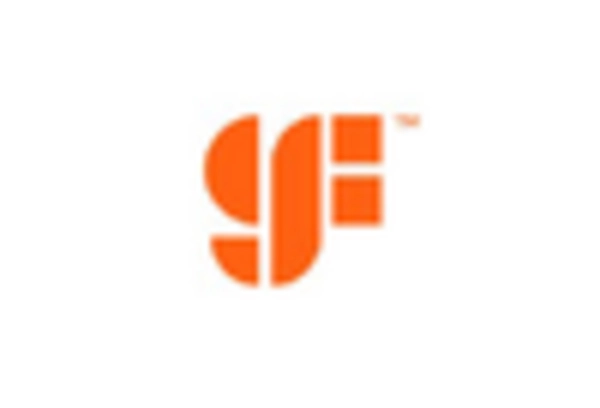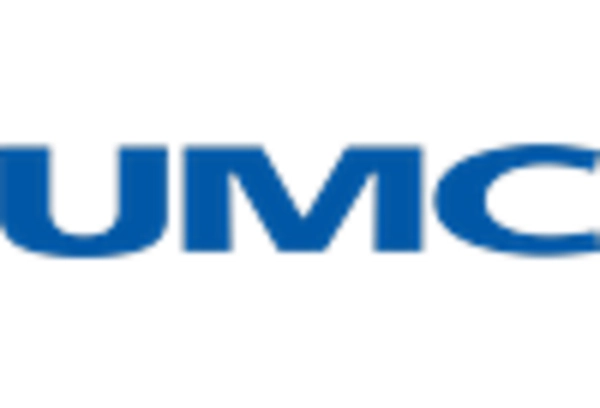Regulatory Support and Incentives
The semiconductor foundry market is benefiting from increased regulatory support and incentives from government entities. In 2025, various initiatives aimed at bolstering domestic semiconductor production are being implemented, including tax incentives and grants for research and development. Such measures are designed to stimulate growth within the semiconductor foundry market, encouraging companies to invest in new technologies and expand their manufacturing capabilities. This supportive regulatory environment may lead to a more resilient supply chain and enhanced competitiveness in the global market, ultimately fostering innovation and growth within the semiconductor foundry market.
Growing Demand for Advanced Electronics
The semiconductor foundry market is significantly influenced by the rising demand for advanced electronic devices. With the proliferation of smart devices, IoT applications, and AI technologies, the need for high-performance semiconductors has intensified. In 2025, the market for consumer electronics is projected to exceed $1 trillion, driving the semiconductor foundry market to adapt and innovate. This demand compels foundries to enhance their production processes and develop cutting-edge solutions, ensuring they can meet the specifications required by manufacturers of sophisticated electronic products. Consequently, this trend is likely to propel growth within the semiconductor foundry market.
Strategic Partnerships and Collaborations
The semiconductor foundry market is witnessing an increase in strategic partnerships and collaborations among key players. These alliances are often formed to leverage complementary strengths, share technological advancements, and optimize supply chains. For instance, partnerships between semiconductor manufacturers and design firms can lead to more efficient production processes and innovative product offerings. In 2025, it is estimated that collaborative ventures could account for up to 30% of new semiconductor projects, indicating a shift towards cooperative strategies in the industry. This trend may enhance the capabilities of the semiconductor foundry market, allowing for more rapid development and deployment of new technologies.
Emerging Applications in Automotive and Healthcare
The semiconductor foundry market is increasingly driven by emerging applications in sectors such as automotive and healthcare. The integration of advanced semiconductor technologies in electric vehicles and medical devices is creating new opportunities for foundries. In 2025, the automotive semiconductor market is projected to reach $50 billion, reflecting the growing reliance on sophisticated chips for vehicle automation and connectivity. Similarly, the healthcare sector's demand for innovative medical devices is propelling the need for specialized semiconductors. This trend suggests that the semiconductor foundry market will continue to evolve, adapting to the specific requirements of these burgeoning industries.
Increased Investment in Semiconductor Infrastructure
The semiconductor foundry market is experiencing a surge in investment aimed at enhancing manufacturing capabilities. Recent data indicates that capital expenditures in the semiconductor sector have reached approximately $200 billion in 2025, reflecting a robust commitment to expanding production facilities. This influx of funding is primarily driven by the need to meet the escalating demand for advanced semiconductor technologies across various industries, including automotive and consumer electronics. As companies strive to innovate and maintain competitive advantages, the semiconductor foundry market is likely to benefit from this trend, fostering advancements in fabrication techniques and increasing overall production capacity.














Leave a Comment